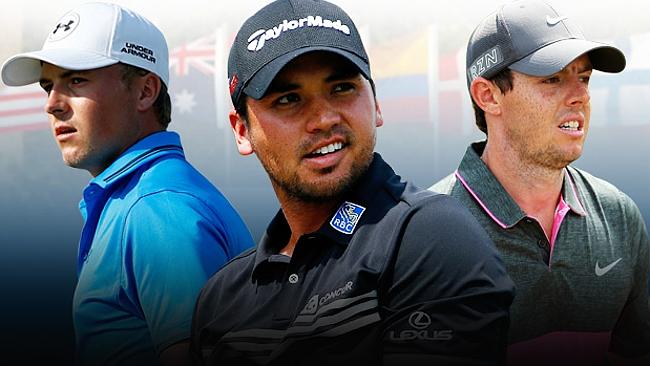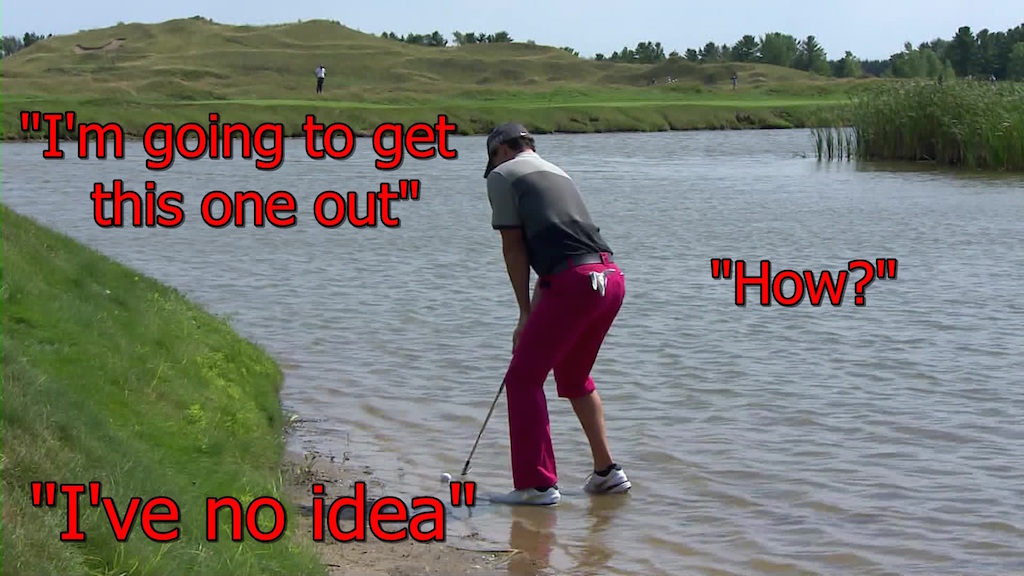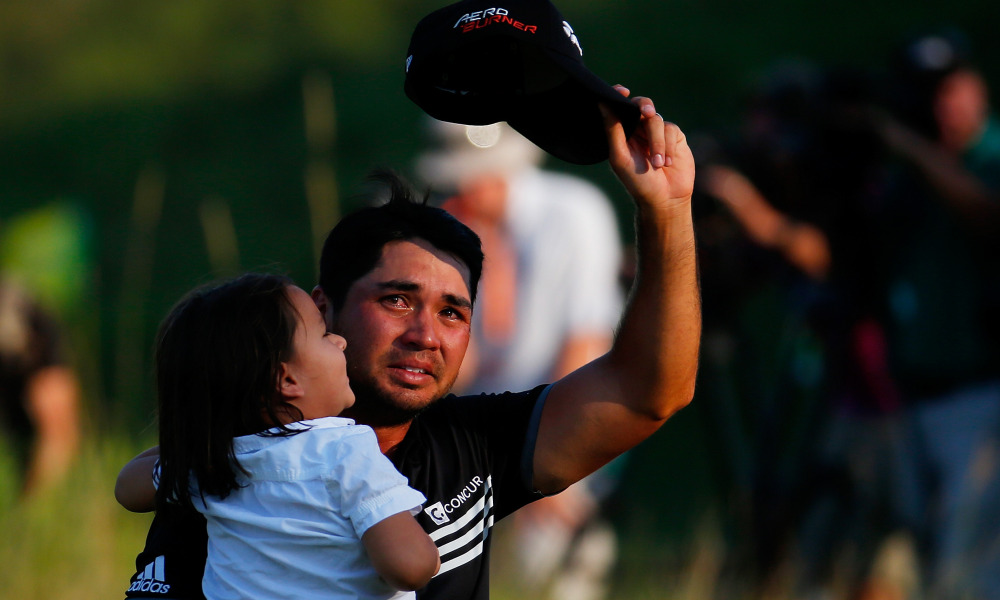Instruction
What can golfers learn from the best players in the world?

Christmas time is when many of my students reflect upon the last year and start setting new goals for 2016. Common goals are “winning the club championship” or “finally breaking 80,” and they can be described as outcomes. What I often fail to see from golfers who are setting such goals, however, is a plan of exactly how those outcomes are going to be achieved.
It’s this type of planning in which the best golfers in the world are particularly skilled, and what I call “the art of goal setting” is one of the major things golfers can learn from top professional players.
To help you set better golf goals, let’s start by understanding what the three basic types of goals are:
- Outcome goals refer to the desired end result and can help motivate athletes (winning a competition, being selected for a team, etc.). Individuals are often not in control of outcome goals, however, as they cannot control what other players in the field will shoot.
- Performance goals specify a particular standard that wants to be achieved (score, amount of fairways hit, etc.) Individuals have very a high level of control of over these goals and hitting performance goals can result in high amounts of satisfaction even when individuals don’t win.
- Process goals, which the individual again has full control over, deal with the technique or strategy required to perform well (maintaining control over the club face, using a consistent pre-shot routine, etc).
I like to use the equation below to illustrate this fact: for golfers to achieve an outcome, they must have a process and a performance.
Getting into the zone
How many of you have come to the final holes of a good round and started thinking about beating your friends, winning the event or how much the score will improve your handicap? With this in mind, golfers often finish poorly, win no trophies and keep the same handicap. This is unfortunately a common theme among club golfers, and herein lies the problem.
At that point of approaching the final holes, the focus changed to an outcome thought. Naturally, the thought of winning will increase anxiety — often to beyond optimal levels (it’s good to be a little bit nervous). Furthermore, these outcome thoughts often divert individuals away from their ever-important process and performance goals.
You may have heard of the phrase “being in the zone,” and it simply means that a golfer was so deeply engaged in his or her own process (this may involve pre-shot routines and focusing on one shot at a time) that he or she was completely distracted from the outcome of the shot at hand — until the last putt was holed and the emotion finally came out.
Remember Jason Day’s performance at the 2015 PGA Championship at Whistling Straits, where he won his first major championship over Jordan Spieth?
The important thing to learn about the zone is that Jason Day and others who have been in his position did not focus on the things they could not control — the outcome. Instead, they were focused on only the things they could control — the process. This engagement in a deep process is a great way to distract players from the outcome thoughts that can promote excessive nerves and poor execution.
Of course, even the best golfers aren’t perfect. They do sometimes fall into the trap of thinking about outcomes on Tour, but the successful ones are skilled at returning to their process and performance goals so they can play their best.
Is it really that easy?
So, with your process and performance goals set in place, you are sure to reach your (outcome) goals next season? Absolutely not, and unfortunately no matter how pretty your plan is, there is nothing like some good old fashioned hard work and determination. In fact, without it, you might as well call your goals wishes. One the flip side, correctly setting your goals will at least allow you to monitor progress and make more effective decisions about your game.
Summary of Key Points
I hope this article has given you good insight into the art of goal setting, while also providing some examples of strategies that the best players in the world are using.
A review of the important key points:
- Outcome goals are great for helping create long-term motivation, however, outcomes cannot always be controlled by the individual.
- Focus more on what you can control (process and performance goals) for the best results.
- Do not get blinded by only the outcome. Remember process + performance = outcome.
- Setting and reaching performance goals is a great way to enhance satisfaction when winning is not achieved.
- Engaging in a deep process is a great way to control levels of anxiety.
- Above all, hard work and determination rule.
- LIKE76
- LEGIT10
- WOW4
- LOL0
- IDHT0
- FLOP4
- OB0
- SHANK3
Instruction
Clement: Laid-off or perfect fade? Across-the-line or perfect draw?

Some call the image on the left laid off, but if you are hitting a fade, this could be a perfect backswing for it! Same for across the line for a draw! Stop racking your brain with perceived mistakes and simply match backswing to shot shape!
- LIKE0
- LEGIT0
- WOW0
- LOL0
- IDHT0
- FLOP0
- OB0
- SHANK1
Instruction
The Wedge Guy: The easiest-to-learn golf basic

My golf learning began with this simple fact – if you don’t have a fundamentally sound hold on the golf club, it is practically impossible for your body to execute a fundamentally sound golf swing. I’m still a big believer that the golf swing is much easier to execute if you begin with the proper hold on the club.
As you might imagine, I come into contact with hundreds of golfers of all skill levels. And it is very rare to see a good player with a bad hold on the golf club. There are some exceptions, for sure, but they are very few and very far between, and they typically have beat so many balls with their poor grip that they’ve found a way to work around it.
The reality of biophysics is that the body moves only in certain ways – and the particulars of the way you hold the golf club can totally prevent a sound swing motion that allows the club to release properly through the impact zone. The wonderful thing is that anyone can learn how to put a fundamentally sound hold on the golf club, and you can practice it anywhere your hands are not otherwise engaged, like watching TV or just sitting and relaxing.
Whether you prefer an overlap, interlock or full-finger (not baseball!) grip on the club, the same fundamentals apply. Here are the major grip faults I see most often, in the order of the frequency:
Mis-aligned hands
By this I mean that the palms of the two hands are not parallel to each other. Too many golfers have a weak left hand and strong right, or vice versa. The easiest way to learn how to hold the club with your palms aligned properly is to grip a plain wooden ruler or yardstick. It forces the hands to align properly and shows you how that feels. If you grip and re-grip a yardstick several times, then grip a club, you’ll see that the learning curve is almost immediate.
The position of the grip in the upper/left hand
I also observe many golfers who have the butt of the grip too far into the heel pad of the upper hand (the left hand for right-handed players). It’s amazing how much easier it is to release the club through the ball if even 1/4-1/2″ of the butt is beyond the left heel pad. Try this yourself to see what I mean. Swing the club freely with just your left hand and notice the difference in its release from when you hold it at the end of the grip, versus gripping down even a half inch.
To help you really understand how this works, go to the range and hit shots with your five-iron gripped down a full inch to make the club the same length as your seven-iron. You will probably see an amazing shot shape difference, and likely not see as much distance loss as you would expect.
Too much lower (right) hand on the club
It seems like almost all golfers of 8-10 handicap or higher have the club too far into the palm of the lower hand, because that feels “good” if you are trying to control the path of the clubhead to the ball. But the golf swing is not an effort to hit at the ball – it is a swing of the club. The proper hold on the club has the grip underneath the pad at the base of the fingers. This will likely feel “weak” to you — like you cannot control the club like that. EXACTLY. You should not be trying to control the club with your lower/master hand.
Gripping too tightly
Nearly all golfers hold the club too tightly, which tenses up the forearms and prevents a proper release of the club through impact. In order for the club to move back and through properly, you must feel that the club is controlled by the last three fingers of the upper hand, and the middle two fingers of the lower hand. If you engage your thumbs and forefingers in “holding” the club, the result will almost always be a grip that is too tight. Try this for yourself. Hold the club in your upper hand only, and squeeze firmly with just the last three fingers, with the forefinger and thumb off the club entirely. You have good control, but your forearms are not tense. Then begin to squeeze down with your thumb and forefinger and observe the tensing of the entire forearm. This is the way we are made, so the key to preventing tenseness in the arms is to hold the club very lightly with the “pinchers” — the thumbs and forefingers.
So, those are what I believe are the four fundamentals of a good grip. Anyone can learn them in their home or office very quickly. There is no easier way to improve your ball striking consistency and add distance than giving more attention to the way you hold the golf club.
More from the Wedge Guy
- The Wedge Guy: Golf mastery begins with your wedge game
- The Wedge Guy: Why golf is 20 times harder than brain surgery
- The Wedge Guy: Musings on the golf ball rollback
- LIKE87
- LEGIT13
- WOW6
- LOL1
- IDHT0
- FLOP4
- OB1
- SHANK8
Instruction
Clement: Stop ripping off your swing with this drill!

Not the dreaded headcover under the armpit drill! As if your body is defective and can’t function by itself! Have you seen how incredible the human machine is with all the incredible feats of agility all kinds of athletes are accomplishing? You think your body is so defective (the good Lord is laughing his head off at you) that it needs a headcover tucked under the armpit so you can swing like T-Rex?
- LIKE0
- LEGIT2
- WOW2
- LOL0
- IDHT0
- FLOP0
- OB0
- SHANK2
-

 19th Hole2 weeks ago
19th Hole2 weeks agoDave Portnoy places monstrous outright bet for the 2024 Masters
-

 19th Hole4 days ago
19th Hole4 days agoJustin Thomas on the equipment choice of Scottie Scheffler that he thinks is ‘weird’
-

 19th Hole2 weeks ago
19th Hole2 weeks agoTiger Woods arrives at 2024 Masters equipped with a putter that may surprise you
-

 19th Hole4 days ago
19th Hole4 days ago‘Absolutely crazy’ – Major champ lays into Patrick Cantlay over his decision on final hole of RBC Heritage
-

 19th Hole2 weeks ago
19th Hole2 weeks agoTwo star names reportedly blanked Jon Rahm all week at the Masters
-

 19th Hole1 week ago
19th Hole1 week agoReport: LIV Golf identifies latest star name they hope to sign to breakaway tour
-

 19th Hole2 weeks ago
19th Hole2 weeks agoNeal Shipley presser ends in awkward fashion after reporter claims Tiger handed him note on 8th fairway
-

 19th Hole1 week ago
19th Hole1 week agoBrandel Chamblee has ‘no doubt’ who started the McIlroy/LIV rumor and why



















Michael
Jan 25, 2018 at 1:49 pm
Love it
golfraven
Dec 14, 2015 at 9:48 am
Golf can be easy if you started playing as a kid and put 10k hours and more in your early years. Once you pass 30 its too late to be consistent (sub par) scratch player unless you have enough $, a personal swing coach and Tracman. So in essence the average Joe will suck at golf!!!
Phil
Dec 16, 2015 at 2:25 am
Golfraven that is such a defeatist attitude and inaccurate. Yes it helps if you learnt as a kid because you tend to have a more free and natural swing rather than try and develop one later in life. The fact is you don’t need $$$ and you don’t need trackman and while a coach helps they can only teach you the tolls but you have to use them. I started when I was 14 hitting balls in a field with clubs that were too big. I didn’t have $$ or technology or a coach and did pretty well eventually shooting consistiently around 2-7 over par. It was all about wanting to achieve someting, being competitive, determined and putting in the work. Over the last 15-20 years I have had at least 2 periods where I didn’t play for 3 years and beyond that averaged 1 game every 2 months thereafter. This year I joined a club again, practised more (even putting at home and chipping in the garden made a huge difference) and played more. I got better but not at the level I was. I had my first pro lessons (4 of them) which helped me regain better form and adjust my swing and now i play and practise more I am getting to a similar level as when I was younger. I reckon I can be better than that but don’t use trackman, or spend tons of $$$ and my coach is there when I want him not every week.
Of course you need some ability too and that coupled with practise is what improves the player
Dosh
Dec 14, 2015 at 3:39 am
that you need lots of money and free time to pay for golf and practice to get any good
Mbwa Kali Sana
Dec 12, 2015 at 3:11 pm
You play YOUR best when you pay nô attention to the score .Play shot by shot .Stay In the moment .Don’t add up YOUR scores until the game is over ,Don’t follow your score compared to par.
Above all ,have fun when you play ,laugh when You miss a shot ,And pat yourself in the back when you have pulled a good shot ,Remember golf is a game And That you are not struggling for YOUR Life!
alexdub
Dec 10, 2015 at 1:14 pm
This is a good way to approach improvement. I sometimes fall into the trap when playing a round where I say, I need to shoot 74. If I shoot 74, I’ll be happy. After a double, the motivation leaves, and I’ll end up shooting 88.For me, I think this is where I focus too much on the outcome.
Conversely, when find the sweet spot and I’m only thinking about the process of each shot, I’ll manage to hit my score target without realizing it. Has anyone else had the experience of playing in-the-moment and counting up your score at the end of the round and thinking, “Hmm, I didn’t think I went that low.”?
mhendon
Dec 10, 2015 at 8:07 pm
Oh yeah I’ve done that many times. There have been several times in the past when my buddy and I decided to play a second 18. Frequently I would go into the second round not taking it to seriously and then go back through the round in my head at the end and realize I had shot just 1 or 2 over. One of my most painful stories of how the moment can get to you is a round from several years ago. I was going into the 18th a par five at my home course 3 under thinking I had a good chance to shoot my lowest score ever. I ended of quadruple bogeying it. The frustrating part is I went into that some hole the week before and the week after and eagled it both times!